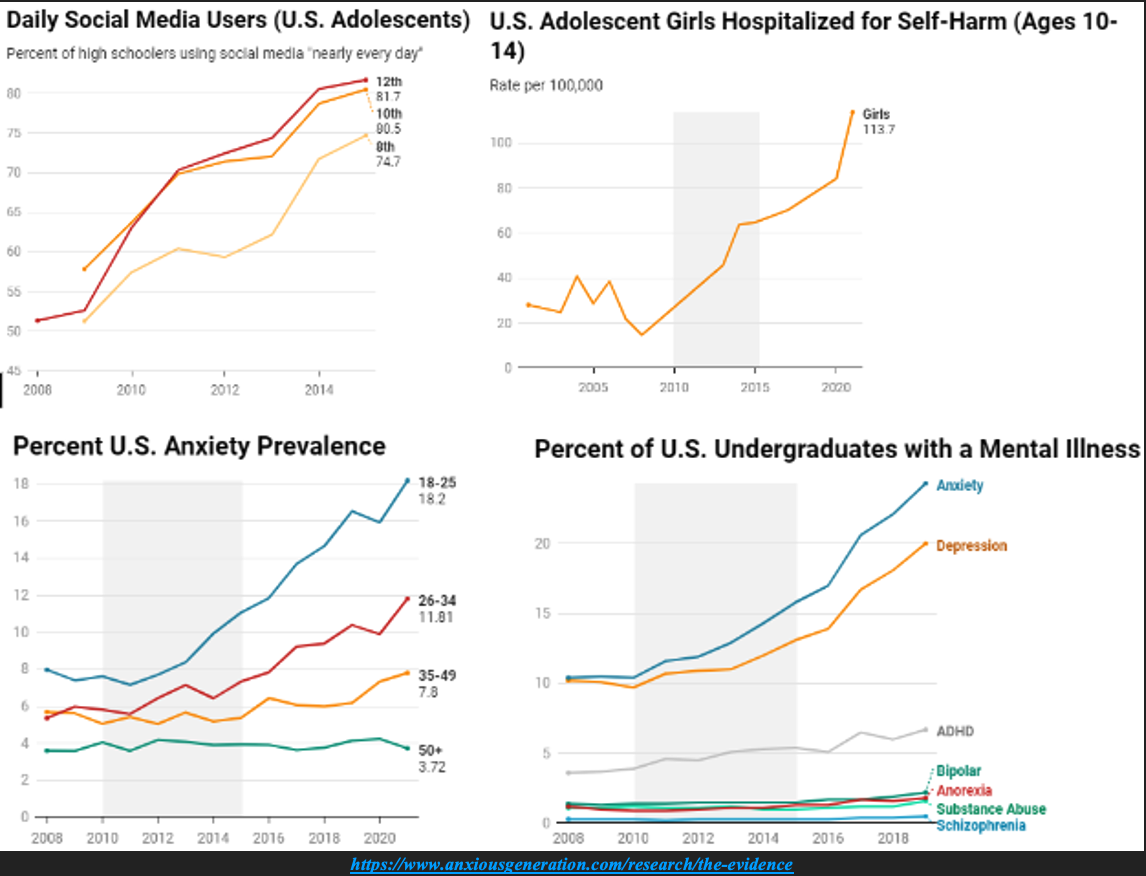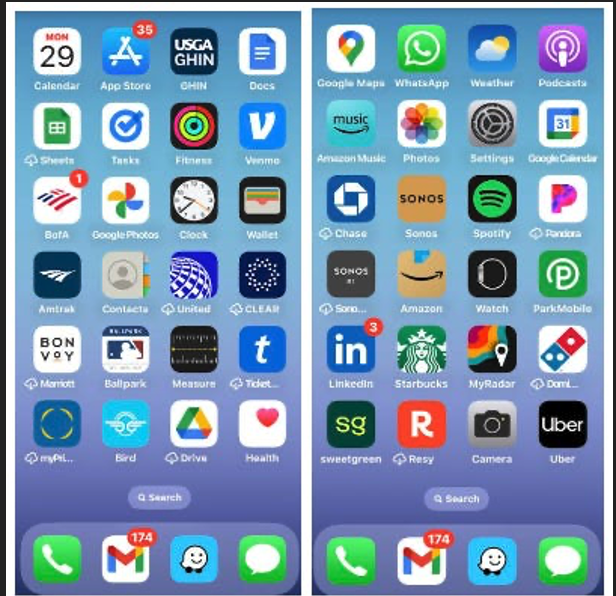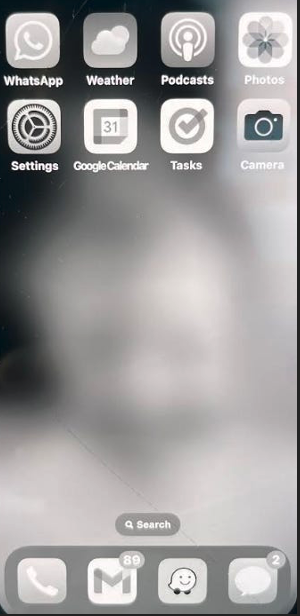My Month Without a Smartphone
Guest post by Ted Lamade, Managing Director at The Carnegie Institution for Science
On a rainy morning earlier this spring, I pulled my car out of our driveway to take my seven-year-old son to school. After shifting from reverse into drive, I looked at my phone to listen to a podcast on Spotify. Then it happened. He said it.
“Dad, why do you have to look at your phone SO much?”
Dagger.
I knew it was coming. It was only a matter of time. Whether I was texting, emailing, or aimlessly flipping through Twitter, I had noticed him glaring at me recently while doing so.
With my car stuck between the driveway and the street as rain pelted my front windshield, I was equally stuck trying to respond. Eventually I muttered some lame explanation in a pathetic attempt to defend the indefensible.
I peered into the rearview mirror to see if he had bought it.
He hadn’t.
The look on his face said it all.
I pulled the car back into the driveway, turned around, and asked him plainly,
“Does it seem like I am ALWAYS on my phone?”
He replied,
“Well, not ALL the time, but a lot of the time. Why do you have to look at it so much?”
Want to know what stung the most?
It was that he didn’t seem mad. It was worse. He just seemed disappointed.
After repeatedly telling him and his brother to get off their iPads, TV, and other devices, here he was telling me to do the same.
Like the dad who gets called out for using drugs himself in the 1980’s War Against Drugs commercial, I was the definition of a hypocrite.
The question was, what was I going to do about it?
I told him I would look at it less, keep it in my room when I was home, and not bring it downstairs. I stayed true to my word….for about a week. Then this discipline broke down and like someone on a crash diet, I reverted to my old ways. Back to the phone, back to aimlessly flipping, back to my son glaring at me.
Then I read Jonathan Haidt’s book, “The Anxious Generation”. If you haven’t heard of it, here is the link. Buy it.
If you don’t see yourself reading a book, try reading this article by Haidt titled, “End the Phone Based Childhood Now” (link).
If you’re simply not a reader, listen to this podcast by Bari Weiss, “Smartphones Rewired Childhood: Here is how to fix it.” Here is that link.
All three are eye opening.
In short, Haidt argues that smartphones and social media are rewiring our kids’ brains, which is making them the most distracted, depressed, and fragile generation in history.
This shouldn’t come as a surprise given that the companies behind smartphones and apps are highly incentivized to keep us glued to them. Just look at what Sean Parker, the first president at Facebook, said about the company’s strategy,
“We wanted to exploit a vulnerability in human psychology. To do so, the apps needed to provide a little dopamine every once and a while to keep you hooked. Me, Mark Zuckerberg, Kevin Systrom (Instagram’s founder), and others knew this and we did it anyway. God only knows what it’s doing to our kids.”
They knew smartphones were the perfect mechanism for delivering dopamine and somehow convinced parents to willingly provide them to their kids during the most formative part in their lives.
The results are more than troubling, especially considering smartphones and social media arrived on the scene rough a decade-and-a-half ago.
From a mental health perspective, the correlation is hard to dispute.

Gen Z’s reading and math scores also began to decline around the same time (Nation’s Report Card), while many reports indicate that this generation is shyer, more risk averse, and less ambitious than previous generations.
Are smartphones and social media 100% to blame?
Maybe, maybe not, but it sure feels like they are at least a significant part of the problem.
Knowing this, and recognizing that I have two young boys who are going to be begging for smartphones in a couple years, I asked myself,
“How am I supposed to tell them that they can’t get one if I am on mine all the time?”
So, I did something a bit odd — I went out and bought a flip phone.
That’s right, a flip phone. This is it.

Anyone over the age of 40 remembers it. Basic screen, grainy pictures, no email, no apps, multiple clicks to text one letter, and most importantly, no social media.
When I turned it on for the first time, it felt like traveling back in time.
I used it for a month and here are my biggest takeaways:
1. I was significantly less distracted
Think about the last time you were waiting in line for lunch, to catch the subway, or at a stoplight. Did you reach for your phone? How about the last time you were out to dinner. Did you check a text when someone you were with went to the bathroom, or worse, in the middle of your conversation? You have. We all have. A flip phone liberated me from this.\
2. I could focus for longer periods of time
I was able to truly concentrate. This meant doing things like reading long-form articles and books, working on projects, and writing without being distracted by a meaningless alert.
3. I was more aware
Not having a smartphone myself enabled me to observe how many people walk, or even drive, around with their phones eight inches from their faces – on the subway, in the elevator, at red lights, on the sidewalks, and even crossing busy intersections. The more I noticed this, the more I realized how bizarre it is. In fact, I kept thinking to myself, if someone took a decades-long nap like Rip Van Winkle and woke up today, what in the world would they make of this phenomenon?
4. I was bored more often
I was bored a lot, but you know what? I actually enjoyed it. Being bored forces you to think and to “be in your own head”, which are both incredibly refreshing. As a friend reminded me, our generation used to be bored all the time as kids, especially during things like long car rides and you know what we did? We invented and created ways to entertain ourselves. Our kids could use more of this. Hell, all of us could.
5. I found that some ignorance can be bliss
Humans are not meant to have instant access to so much information. Yet, due to smartphones, we do, which is creating a “filtering effect”. As a result, we are gravitating to extremes — reading about wars in far flung places is making us more fearful back home, seeing reports of rare child abductions is causing parents to restrict their kids’ freedom to wander even the safest neighborhoods, watching airbrushed Instagram’s and TikTok’s is convincing kids their lives are miserable, and searching WebMD for generic headaches is making us think we have brain tumors. My takeaway? Being a bit “in the dark” can be a very healthy thing.
6. I was more engaged with people, my wife and kids in particular This was my biggest takeaway. I was more engaged with everyone I came in touch with. I talked to my Uber drivers more, chatted with people in the elevator, and was generally friendlier. Most importantly, my wife and kids noticed. In fact, my older son actually said to me recently,
“Dad, can you believe how much time other people spend on their phones?”
“Other people” — what a difference a month can make.
Now I will say, while this month without a smartphone has been liberating in numerous ways, it was not without its issues or drawbacks:
For instance, managing my calendar wasn’t easy, I was forced to print out paper tickets for flights and sporting events, and I had to go back to ordering my morning coffee in person.
I also gained an even deeper appreciation for an app like Waze after getting stuck in significant traffic driving home from my son’s practice because I couldn’t see that there was an accident on the beltway.
There were some things that fell in the “mixed bag” category as well:
While I was less distracted, I missed my group texts given that my flip phone only allowed up to four people on a text.
Access to emails, in moderation, is also likely a net positive of smartphones as it enables us to have more flexibility in their careers and lives.
Cameras are a bit dicier. I originally thought they were a “nice to have”. However, after experiencing a month without one, it made me wonder why we are choosing to live life like this,

When we could be living like this.

Takeaways
I’m open to be persuaded, but after living life without a smartphone for a month, the case for keeping them out of kids’ hands as long as possible is pretty damn compelling. Afterall, if adults are as addicted to them as they appear to be, what are the chances young and impressionable kids can fare any better?
So, what would I suggest?
1. A Detox
Try it for a week, a month, or more. It was liberating. “Detoxing” provided a great perspective on just how distracted kids must be with these things, how much less distracted they would be without them, and what life used to be like before we all became addicted.
2. Cut out the non-productive apps
It is ironic, but if the Blackberry got the nickname “Crackberry” because of its addictive nature, these modern smartphones are straight up heroin.
They don’t need to be though.
This is what my iPhone used to look like:

This is what my iPhone looks like today.

Twelve apps, all of which are relatively productive. Also, I found this grayscale feature that has made the phone infinitely less interesting, and yes, boring…which is a good thing.
The result?
My daily usage is down more than 75%, I don’t feel myself reaching for it nearly as much, and most importantly, my kids don’t see me on it very often (or at least they have said anything yet…).\
3. Incentivize Kids to Not Use Phones in School
I am in no place to tell anyone what to do with their kids. That said, I think the evidence is pretty compelling in favor of finding ways to limit smartphone usage during the school day for many of the reasons I have highlighted. Even more compelling is the fact that most kids don’t even seem to want them there, so long as that means NO ONE has them at school.
Look no further than a recent study led by the University of Chicago economist Leonardo Bursztyn that captured the dynamics of this social-media trap.
Bustztyn recruited more than a thousand college students and asked them how much they would need to be paid to deactivate their accounts on either Instagram or TikTok for a month. On average, students required roughly $50 ($59 for TikTok, $47 for Instagram) to deactivate whichever platform they were asked about.
Next, the experimenters added a wrinkle to the question. They asked,
“If we are successful in getting your classmates to deactivate as well, would that change the price you would require to deactivate your phone?”
The typical response stunned the researchers. Not only did the price change, on average the students said they would be willing to PAY the experimenters to deactivate their Instagram and Tik Tok accounts if their classmates did as well.
More recently, I spoke with someone who ran an Outward Bound trip for middle school students and conducted a survey after the trip. Care to guess what the kids voted was the best part about the trip?
Being in nature? Rock climbing? Sleeping in tents? Fishing?
Nope.
The top response was being away from their phones.
So, what, if any, investment implications should come from this?
That’s for a later date.